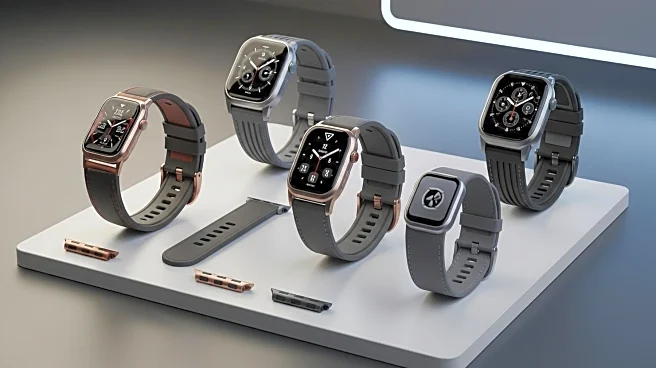What is the story about?
What's Happening?
CNS Watch Bands is at the forefront of evolving smartwatch aesthetics in 2025, focusing on innovative materials and design choices. The global smartwatch market is projected to grow significantly, driven by health sensors, IoT integration, and fashion convergence. The watch strap, once an afterthought, has become a critical element for branding and differentiation. CNS Watch Bands is exploring new frontiers in material innovation, including improved silicone formulations, sustainable materials like algae-based polymers, and hybrid straps combining textiles with rigid cores. Premium models are seeing a resurgence of slim metal and ceramic bands, reworked for lighter weight and modular flexibility. Customization is a key trend, with modular strap systems allowing users to personalize their devices with decorative adapters and electronic modules. Comfort and fit are also being enhanced with bio-sensory designs that adapt to different contexts, such as workouts or formal wear.
Why It's Important?
The developments in smartwatch strap design have significant implications for the wearable technology industry. As the market grows, the demand for innovative and customizable straps is increasing, offering new opportunities for brands and designers. The focus on sustainable materials aligns with broader environmental concerns, appealing to eco-conscious consumers. The shift towards modular and customizable designs reflects a growing consumer desire for personalization, which could drive sales and brand loyalty. For manufacturers, the challenge will be to balance innovation with cost-effectiveness, as pricing pressures remain a concern. The ability to offer durable, stylish, and affordable straps could be a key differentiator in a competitive market.
What's Next?
As the smartwatch market continues to expand, brands will likely intensify their focus on strap innovation to capture consumer interest. The trend towards modular and customizable designs is expected to grow, with more brands offering interchangeable components and third-party accessories. Sustainability will remain a priority, with ongoing research into eco-friendly materials. Companies may also explore new distribution models, such as direct-to-consumer approaches, to reduce costs and improve margins. Consumers can expect a wider range of options in terms of style, material, and functionality, as brands strive to meet diverse preferences and needs.
AI Generated Content
Do you find this article useful?

















